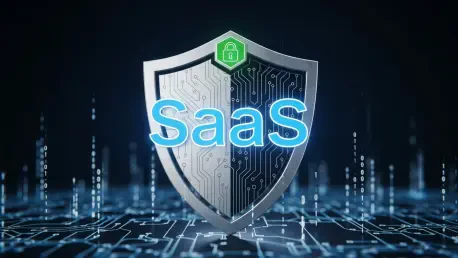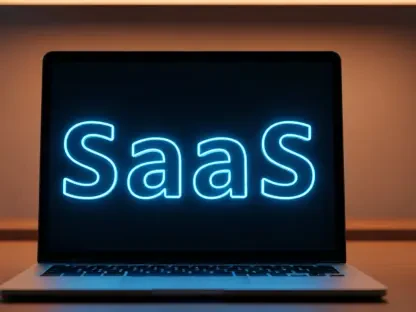Software as a Service technology provides businesses with unprecedented access to IT resources. Large enterprises often use over 1,000 SaaS applications, a number that continues to rise as new tools enter the market. While this ecosystem delivers operational flexibility and productivity, it also introduces significant security risks. Managing numerous applications can become complex, and gaps in oversight can create vulnerabilities.
One of the most effective strategies for mitigating these risks is the Zero Trust security model. This approach operates on a simple principle: “trust no one.” Every connection, user, and device must be verified before access is granted.
As organizations increasingly rely on SaaS, especially with distributed or remote workforces, the importance of robust management and security becomes critical. Employees may connect from networks outside corporate control, amplifying the potential for unauthorized access.
Shadow IT remains a persistent challenge. Employees can easily sign up for SaaS tools independently, often without involving their IT department. While convenient, this practice creates blind spots in security oversight and raises the risk of data breaches. Additionally, because SaaS platforms are managed by third parties, organizations often have limited control over security configurations and data handling.
Read on to learn how the Zero Trust model addresses these challenges and applies policies consistently across all stakeholders, ensuring security is maintained without compromising usability.
Understanding the Zero Trust Model
Zero Trust is a security architecture that requires verifying a user’s identity before granting access to any resource. Unlike traditional models, which may inherently trust users within a corporate network, this method assumes no default trust. Every user and device must be authenticated continuously, even when accessing different parts of the network.
Authentication often involves multi-factor authentication and other identity verification measures to ensure that only authorized users can access sensitive resources. Devices and applications remain inaccessible until identities are validated. Location-based access controls and identity protocols further restrict access, protecting third-party connections, cloud workloads, IoT devices, and internal data through micro-segmentation and other security measures.
How Zero Trust Strengthens SaaS Security
Zero Trust is not a single product, but a comprehensive approach that spans policies, processes, and technologies. Its importance in reducing enterprise risk, particularly in SaaS environments, cannot be overstated.
The National Institute of Standards and Technology defines Zero Trust Architecture as a framework to enforce least-privilege, per-request access decisions, even in networks that may be compromised. ZTA encompasses both infrastructure (physical and virtual) and operational policies that govern how users, devices, and applications interact securely.
In practice, trusting no one ensures access is restricted to the minimum necessary level, aligning with the principle of least privilege. This applies to data, applications, infrastructure, and other assets.
The Cybersecurity and Infrastructure Security Agency provides a Zero Trust Maturity Model to help organizations implement this framework, highlighting five key pillars:
Identity
Devices
Network
Applications & Workloads
Data
Next, the Cybersecurity and Infrastructure Security Agency’s framework identifies three capabilities essential for applying Zero Trust to SaaS:
Visibility and AnalyticsOrganizations need insight into their SaaS environments. Key questions include:
Which employees lack MFA?
How many files are shared publicly?
Which no-code workflows have excessive access?Visibility helps identify risks and prioritize remediation.
Automation and Orchestration
Automation ensures security policies are applied consistently and efficiently. In SaaS, this includes managing identities, revoking unused permissions, and controlling data sharing and access. Automation reduces human error and enhances operational hygiene.
Governance
Governance ensures Zero Trust policies are enforced consistently. Reporting and monitoring are crucial for tracking maturity and ensuring compliance with organizational security objectives.
Applying Zero Trust to SaaS
SaaS simplifies application delivery by eliminating the need for local infrastructure or complex installations. Many applications allow users to log in via single sign-on, such as Google or Microsoft accounts. While convenient, this can lead to challenges like shadow IT and unused applications.
Identity becomes critical. Managing identities effectively requires enforcing MFA and limiting unnecessary permissions. Modern SaaS administrators should have only the access needed for maintenance and monitoring, avoiding excessive privileges. Legacy applications often grant administrators access to data or functions that exceed their responsibilities, thereby increasing risk.
Applications and workloads must be protected at all costs. SaaS platforms, including low-code/no-code tools such as Workato, Zapier, and Microsoft Power Automate (formerly known as Microsoft Power Apps), often contain sensitive workflows. Access to these tools should adhere to the principle of least privilege, with users granted only the permissions necessary to complete specific tasks. Credential management should also minimize exposure.
Data security is another top priority. Data must be accessible for legitimate use but protected from unauthorized access. Once data is leaked, it cannot be fully recovered. Automated permission management through SaaS application programming interfaces enables organizations to enforce least-privilege access policies efficiently, thereby reducing the risk of accidental or malicious exposure.
Best Practices for Implementing Zero Trust Security
Start with a clear plan. To implement Zero Trust Security, first, analyze your network. Identify sensitive data, how it moves, and who needs access to it. This understanding is essential for creating effective policies and controls.
Use a least privilege access model. Grant users only the access they need for their specific roles. Regularly review and update these access rights to prevent misuse.
Micro-segmentation is key. Divide your network into secure areas to protect important assets and information from potential breaches. Enhance security by using several steps to verify and identity and access management solutions. Multi-factor authentication requires an extra step for verification, while IAM helps manage user identities and access.
Avoid common mistakes. Avoid rushing to implement the strategy or overlooking training. Remember that any type of security isn’t a one-size-fits-all solution. You need to adapt your approach to meet your organization’s specific needs. Careful planning, understanding your current security status, setting realistic goals, and using resources wisely are crucial for a successful rollout. Continue to assess and improve your updated approach to stay ahead of emerging threats.
Conclusion
The rapid expansion of SaaS usage in modern enterprises demands a proactive approach to security. Zero Trust provides a robust framework for managing identities, applications, and data, while minimizing risks associated with shadow IT and third-party services. By combining visibility, automation, and governance across all pillars, organizations can effectively secure their SaaS environment, ensure compliance, and maintain operational efficiency.









